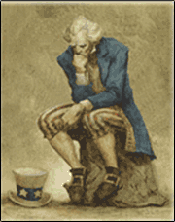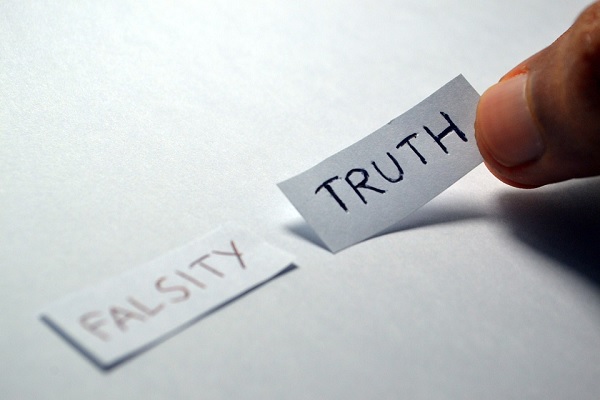
–>
May 28, 2023
During a seminar on Modernism, funded by the National Endowment for the Humanities, I delivered a presentation linking modernist ideas with fascism; communism; and other anti-democratic, authoritarian political systems. My presentation was not well received by the seminar’s director, a left-wing professor at UNC-Chapel Hill. What he especially objected to was my evidence that Modernism is an inherently reactionary, anti-modern cultural movement and that deathly figures such as Hitler and Mao were modernists in their cultural tendencies.
‘); googletag.cmd.push(function () { googletag.display(‘div-gpt-ad-1609268089992-0’); }); document.write(”); googletag.cmd.push(function() { googletag.pubads().addEventListener(‘slotRenderEnded’, function(event) { if (event.slot.getSlotElementId() == “div-hre-Americanthinker—New-3028”) { googletag.display(“div-hre-Americanthinker—New-3028”); } }); }); }
My presentation must have struck a chord, because the seminar director devoted the final plenary session to an effort to rebut my ideas — without giving me an opportunity to respond. I laughed it off at the time, but my further research has only convinced me more strongly of the correctness of my thesis.
The professor (who shall remain unnamed) believed, as many left-wing intellectuals do, that fascism is an expression of conservative, bourgeois culture and that Modernism, as an expression of collectivist and egalitarian politics, is its opposite. He believed that ordinary “bourgeois” culture, as he called it, is the ground from which fascism arose. He was quite hostile toward ordinary Americans in particular, since America was, at the time, the world’s great defender of democratic capitalism.
I pointed first of all to the semantic confusion at the heart of his thinking: the idea that Modernism represents an artistic and political culture that is in fact “modern.” Actually, Modernism is a reactionary culture, a fact that I demonstrated by pointing in detail to the works of a dozen leading Modernist figures including T.S. Eliot, Ezra Pound, James Joyce, W.B. Yeats, Pablo Picasso, and others. In all of these writers and artists, there was a similar rejection of all that is truly modern: a democratic capitalist society in which ordinary citizens seek freedom and opportunity for themselves and their families, including economic, religious, and political liberty.
‘); googletag.cmd.push(function () { googletag.display(‘div-gpt-ad-1609270365559-0’); }); document.write(”); googletag.cmd.push(function() { googletag.pubads().addEventListener(‘slotRenderEnded’, function(event) { if (event.slot.getSlotElementId() == “div-hre-Americanthinker—New-3035”) { googletag.display(“div-hre-Americanthinker—New-3035”); } }); }); }
I recited established facts, such as Eliot’s support of Action Française, the French fascist party; Pound’s work as a propagandist for Mussolini; Yeats’s attraction to pre-modern Celtic mythology and to authoritarian and, by analogy, fascist cultures; Picasso’s left-wing politics and abstract, anti-bourgeois style of art; Joyce’s violent rejection of Catholicism and mockery of conventional bourgeois society in his native Ireland; and numerous other examples. I challenged the seminar participants to produce one example of a modernist writer or artist whose sympathies were democratic, humanistic, religious, and freedom-loving.
In response, the seminar director produced copies of Hitler’s early architectural sketches, which are indeed conventional and, in a sense, “bourgeois,” but no more than adolescent drawings. What these sketches prove is that as an artist, Hitler was mediocre and untalented, but not that his sensibilities were aligned with those of democratic capitalism. Indeed, Hitler was overwhelmingly anti-democratic (“all for the State, nothing for the individual”); he advanced a theory of an idyllic ancient Aryan society that, in his misguided thinking, had been displaced during the 8th century by the forces of Charlemagne; and his murderous antisemitism was connected with a broader rejection of capitalism and conventional arts and entertainment, including American popular music and film.
In postwar America, postmodernism continued this antidemocratic and anti-capitalist tendency, and the leftist takeover of academe continued to promote an utterly false conception of the nature of modern art. The central point is that all modernist art is, almost by definition, reactionary as it seeks to reverse what is truly modern — the enormous achievement of democratic capitalist culture in providing freedom and opportunity for billions of ordinary human beings — and to supplant it with the anti-humanistic totalitarian culture of fascism or communism, both of which are simply variations on the theme of the anti-modern and anti-democratic.
When T.S. Eliot, with his fascist sympathies, wrote of his fervent love of 12th-century Europe ruled by absolute monarchs, or when W.B. Yeats spoke of his admiration of the 4th-century Byzantine Empire, they were not simply voicing imaginative fantasies. Eliot and Yeats, and the other modernists, were quite serious about reverting to the medieval past before the rise of democracy and capitalism and human freedom, which they hated almost as much as did Hitler, Stalin, and Mao. It is not too much to say that modernist art was a death cult pointing in the same direction as fascism and communism. It is therefore crucially important that Modernism and postmodernism be recognized for what they are: the culmination of a deathly contempt for everyday human beings and for human freedom.
Today, Joyce and Eliot are not much studied in American universities. They have been displaced by an even more pernicious and directly anti-democratic curriculum: the “study,” if it can be called that, of race, class, and sex as the basis of all human society. It was almost inevitable that an academic culture as nihilistic as Modernism would give way to a way of thinking that provides the illusion of social good, even if that good is to be advanced by absolute censorship, recriminations, and force.
Today’s woke culture, the outcome of decades of academic support for identity politics, is every bit as anti-democratic, anti-capitalist, and anti-religious as were fascism and communism, perhaps because, like fascism and communism, wokeism has its origins in Marxism, an intensely anti-modern, skeptical, and authoritarian system of thought. In this sense, wokeism fills the spiritual and moral void left behind by Modernism and postmodernism. What was “cool” about Joyce and Eliot has become even cooler among undergraduates (and their professors, for that matter) who have actually read nothing and never thought seriously about the real nature and direction of “modern” society. All they know is that “black is good, white is bad” and “transgender is good, biological sex is bad” and similar idiocies.
‘); googletag.cmd.push(function () { googletag.display(‘div-gpt-ad-1609268078422-0’); }); document.write(”); googletag.cmd.push(function() { googletag.pubads().addEventListener(‘slotRenderEnded’, function(event) { if (event.slot.getSlotElementId() == “div-hre-Americanthinker—New-3027”) { googletag.display(“div-hre-Americanthinker—New-3027”); } }); }); } if (publir_show_ads) { document.write(“
Those who wish to understand what is genuinely modern should examine the great cities rising in Florida and Texas, the great opportunity and freedom that America extends to all its people (without the need for favoritism or reparations), the great art of Hollywood at its apex in the 1930s, and the magnificent skylines of American cities today and of the technological productivity upon which these cities have been built. Most of all, those who wish to understand the true achievement of modernity must examine the lives of ordinary men and women who, unlike their ancestors in the 12th century, have earned a dignified place as human beings in a free society.
The Modernists dreamed of forcing the masses back into medieval serfdom (with Joyce and Eliot as their betters, of course). In WWII and the Cold War, Americans defeated this perverse way of thinking, and it is likely we will have to defeat it once more. Before that happens, we must recognize left-wing art and politics, including wokeism, for what they are: a deathly assault on all that is decent and good in the modern world.
Jeffrey Folks is the author of many books and articles on American culture including Heartland of the Imagination (2011).

Image: Ramdlon via Pixabay, Pixabay License.
<!–
–>
<!– if(page_width_onload <= 479) { document.write("
“); googletag.cmd.push(function() { googletag.display(‘div-gpt-ad-1345489840937-4’); }); } –> If you experience technical problems, please write to helpdesk@americanthinker.com
FOLLOW US ON
<!–
–>
<!– _qoptions={ qacct:”p-9bKF-NgTuSFM6″ }; ![]() –> <!—-> <!– var addthis_share = { email_template: “new_template” } –>
–> <!—-> <!– var addthis_share = { email_template: “new_template” } –>





